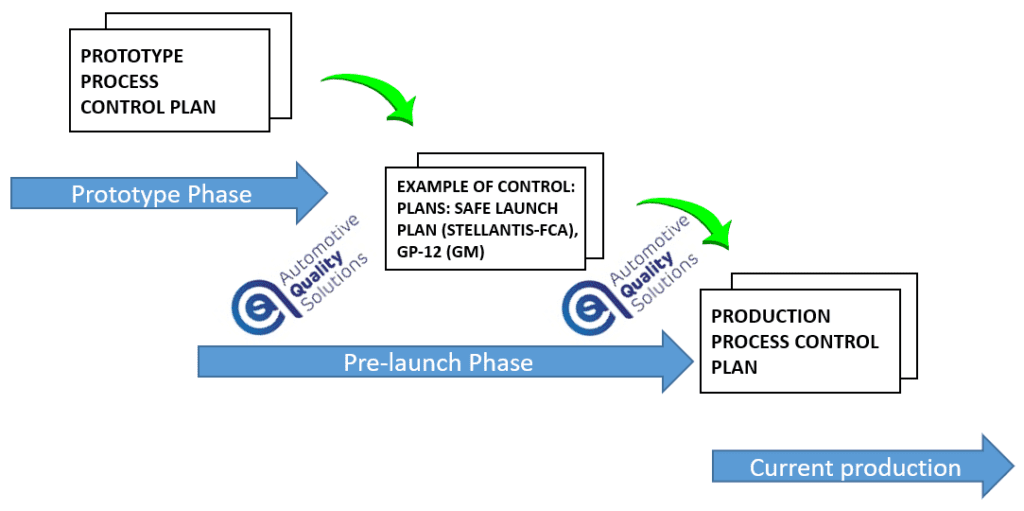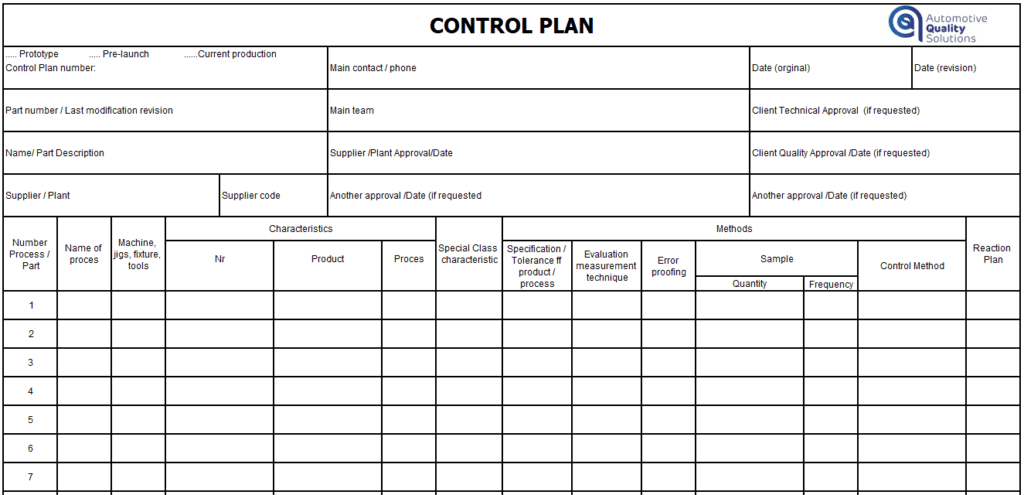A Control Plan is one of the three essential quality documents that suppliers create after receiving a new project assignment from the customer (OEM).
In this article, we explain the types of Control Plans, when we should update this document, and other useful information to know.
Types of Control Plans based on Development Phases
In the automotive industry, we typically encounter three types of Control Plans:
1. Control plan for Prototype Parts.
This type is developed less frequently by the production plant. This is because prototype parts are most often prepared by the supplier’s engineering team, which operates outside the production plant’s structures.
In automotive terminology, we refer to such a location as a Remote Location. One of the few exceptions where the production plant might produce prototypes is when the production line has specific requirements.
This most often occurs with electronic components, where the production line is developed and implemented directly within the plant, bypassing the development center due to its complexity and cost.
2. Control plan for Pre-series Production.
Some customers require the implementation of an additional Control Plan during pre-series production. This differs from the standard document by featuring, among other things, an increased frequency of inspections and a higher quantity of parts being inspected.
For example, General Motors (GM) requires the implementation of GP-12, while Stellantis xFCA requires the implementation of a Safe Launch Plan in accordance with the GSQN-004 Global Stellantis Proactive Containment Procedure.
3. Control plan for Current Production.
After completing the enhanced inspection phase, we use this Control Plan and apply it to ongoing production.

What else is worth knowing?
Characteristics Matrix
One of the most important elements of this document is the correct application of the customer’s special characteristics (critical and/or significant). When a supplier ships products to multiple customers, it is easy to make mistakes in managing these characteristics.
To avoid this, a common practice is to use a characteristics matrix. This matrix presents a unified designation of special characteristics accepted by the organization, along with their equivalents used by individual customers.
Control Plan approval
During the evaluation of a supplier’s production process, each customer will verify the relevant documentation, including the Control Plan. It’s important to note that customer approval of this document does not always require a physical signature. The customer can imply approval if they make no comments or objections during the audit.
Requalification tests – Where to include them?
Some customers have specific requirements related to IATF Section 8.6.2, which concern periodic requalification tests for products in current production. You should typically include these tests in the document after the Final Product Audit section.
When should you update the Control Plan?
As a rule, we should update the above document in the following cases:
- Including Special Characteristics: For example, in relation to the Special Characteristics Communication and Agreement Form (SCCAF) used in collaboration with the FORD customer. In one of the recertification audits at the plant where I work, we received a non-compliance issue due to this.

- Change Implementation: It’s essential to document any reviews of thi document. This helps avoid potential quality claims from customers. It must also remain consistent with other key quality documents, such as the PFMEA and the Process Flow Chart, particularly in the naming and numbering of operations.
- Quality Notification from the Customer: The Control Plan should be updated when a quality issue is identified, and the root cause is linked to the production process. Another scenario for an update could involve non-compliance with a component. In such cases, the organization may proactively adjust the controls in place for Incoming Inspection. Incoming Inspection.
You can download a free, automatic, editable Excel form for the Control Plan from Free Quality Tools
Dariusz Kowalczyk


